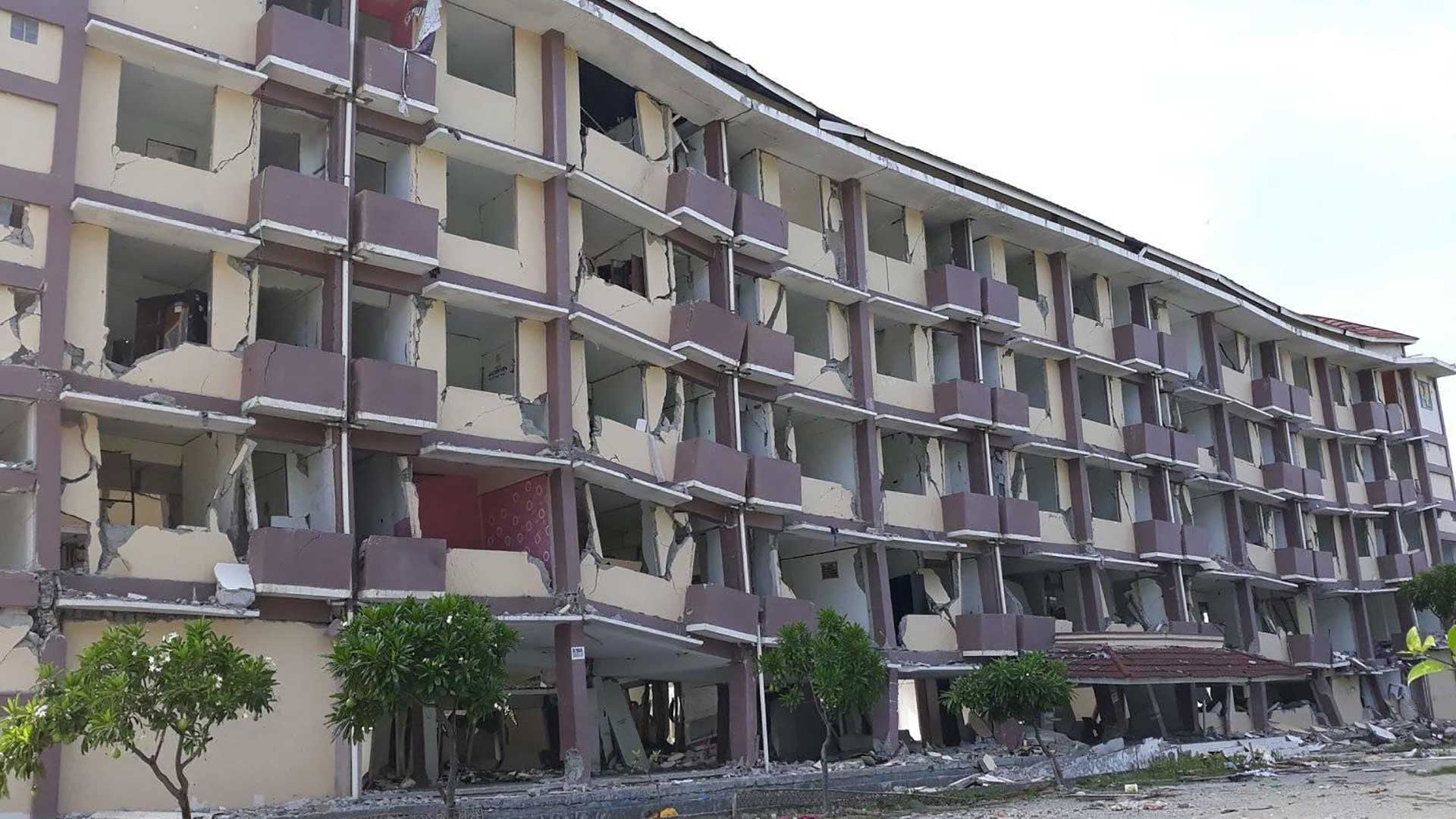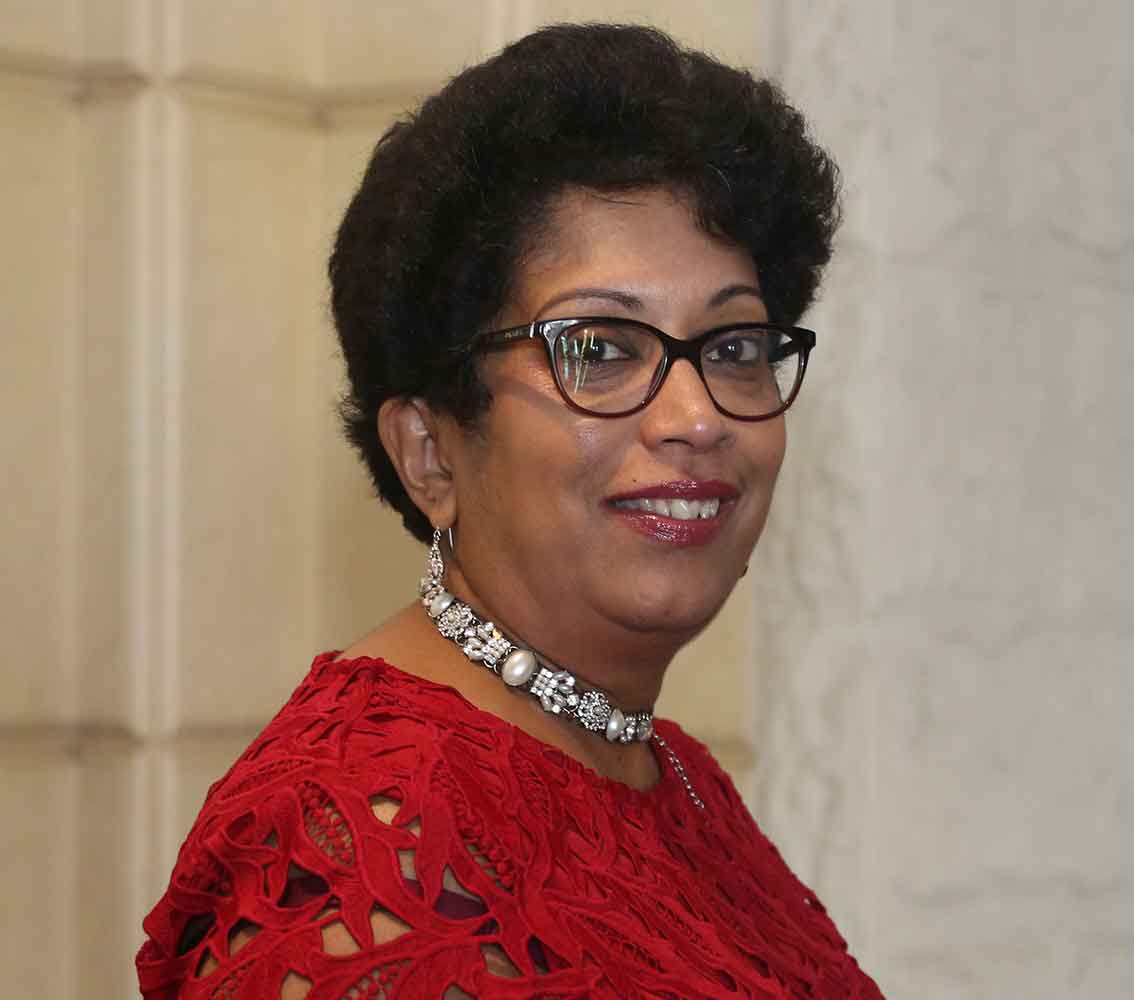Early warning system
Countries around the Indian Ocean are benefitting from the experience and advice of Professors Dilanthi Amaratunga and Richard Haigh on how they best prepare to cope with a potentially disastrous tsunami.
An estimated 270,000 people in the region of the Indian Ocean died as a result of the undersea earthquake that struck off the northern tip of Sumatra in Indonesia on 26 December 2004. The 9.1 magnitude quake set off a tsunami that devastated coastal regions in over 20 countries, and reached as far away as Tanzania and South Africa.
The lack of a region-wide monitoring and warning system that day undoubtedly contributed to the death toll. Since then, a network of buoys in the Indian Ocean has sent information on sea levels and seismic activity back to regional warning centres in the cities of Hyderabad, Jakarta and Perth. But how data from the system is interpreted and acted upon is vital if populations are to be warned in time. It is the ongoing challenges in this process that have led to Professors Amaratunga and Haigh, both Co-Directors of the University of Huddersfield’s Global Disaster Resilience Centre, becoming involved.

The pair are vastly experienced in working around disaster resilience and have deep knowledge of the region. In Professor Amaratunga’s case there is a personal aspect to their work – she was in her native Sri Lanka when the Boxing Day tsunami struck, killing an estimated 35,000 people in the country. “There was no warning system in the Indian Ocean before 2004, and on the day itself we knew next to nothing. The tsunami didn’t strike Sri Lanka until three hours after the earthquake,” she says.
“The regional warning centres interpret the information and send it out to the 28 countries involved to tell them what the threat level is,” explains Professor Haigh. “It is up to the individual countries to decide what to do next – such as evacuate, put communities on warning, alert emergency services and so-on.
“The challenge is that the countries we’re talking about are very different geographically, politically and culturally. Indonesia, for example, has many islands and a decentralised provincial structure, so a decision might be made by a local mayor. Sri Lanka is one island, with a smaller population and a centralised government structure.”

The two countries were studied in the Tsunami Interface project – the interface being the point where authorities decide what to do after receiving information and before informing at-risk areas what action to take. Professors Amaratunga and Haigh are the only international experts to be advising the Tsunami Early Warning Group of countries, and have discussed how Sri Lanka and Indonesia’s authorities are set up to cope with a potential tsunami with stakeholders in both countries.
“They need a common understanding of what information is to be received and sent,” says Professor Haigh. “There was some misunderstanding about what was coming from their regional warning systems.” Even improving seemingly simple logistics were raised by the Professors when they worked as advisers during the Indian Ocean Wave tsunami exercise in September 2018. Each was in a different control room only a walking distance apart in Colombo, Sri Lanka, but communications between the two centres was almost non-existent apart from fax machines relying on a public line.
“In the exercise, faxes were sent, and either they didn’t arrive or took up to 25 minutes to appear. Imagine that in a real situation? It was scary,” Professor Amaratunga says. Even changes to the physical layout of the rooms in the Disaster Management Agency and Meteorology Agency formed part of the recommendations.
“They cannot really process all the information that comes in with the way their systems are laid out,” Professor Haigh adds. “They will have such little time to make decisions, so some of what we’re saying is that technology needs to be updated, while some is all about procedures.”
Next on the agenda for the pair’s work on the project will be assessing responses to different types of earthquakes. “Strong, shallow quakes like the one in 2004 will be easy to call,” says Professor Haigh, “but it’s the marginal cases that need looking at. With one of these at what stage do they call a President for approval, are they contactable? That’s the focus of this next phase of the project.”

Professor Dilanthi Amaratunga
Global Disaster Resilience Centre Co-Director
Professor Dilanthi Amaratunga is a leading international expert in disaster resilience with an international reputation. Dilanthi’s vision has always been to be an international leader in disaster risk reduction and management with specific emphasis on the built environment, and to champion the under representation of women in this key research area. To find out more about the research in this article, please contact Professor Dilanthi Amaratunga, email: D.Amaratunga.hud.ac.uk

Professor Richard Haigh
Global Disaster Resilience Centre Co-Director
Professor Richard Haigh joined the University of Huddersfield in 2014 as Co-Director of the Global Disaster Resilience Centre at the School of Art, Design and Architecture. This multi-disciplinary Centre is committed to excellence in research and collaboration to improve the resilience of nations and communities to disasters. To find out more about the research in this article, please contact Professor Richard Haigh, email: R.Haigh@hud.ac.uk
Winter 2018 issue
Return to the home page for the Winter 2018 issue of Discover.
Next article
The University of Huddersfield Press supports emerging researchers by providing a platform for developing academic areas.